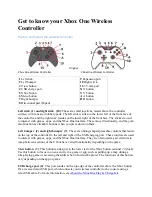
South Bend, Indiana USA
|
networketi.com
FPT-130 INSTALLATION MANUAL |
PART NO.
25165
REV
F
8
OPERATION
The FPT 130 can maintain temperatures at setpoints of
r)r)r)RUr)ŧr&r&r&RU
10 °C). The heater will energize when the temperature
drops below the designated setpoint. The heater will de-
energize when the temperature reaches 2 °F (1 °C) above
the setpoint.
The FPT 130 features ETI’s patented self–testing GFEP,
which switches the system off when it detects excessive
ground current leakage (unless Fire Protection Mode is
on). The GFEP eliminates the extra expenses associated
with having to provide external GFEP.
The FTP 130 also features a Low Current Alarm, which
switches the system off when it detects a load current
below 0.1 amps (unless Fire Protection Mode is on). The
load current is checked during each ground fault test,
and whenever the load is on. Note: the low-current alarm
WDNHVƓYHVHFRQGVRIORZFXUUHQWWRDFWLYDWH
FPT 130 Front Panel
Indicator Lights (See Figure 8.)
• POWER indicator – This green LED lit solid indicates that
the FPT 130 is receiving power.
– Blinking indicates a calibration error.
• HEAT indicator – This yellow LED lit solid indicates when
the heater is energized.
– Blinking asymmetric (1/2 sec off × 1–1/2 sec on) – Low
Current Alarm, heater relay closed.
– Blinking asymmetric (1/2 sec on × 1–1/2 sec off) – Low
Current Alarm, heater relay open.
– Blinking fast – Stuck relay.
• LOW TEMP indicator – This blue LED lit solid indicates
when the temperature falls to 32 °F (0 °C) for all
setpoints except the 30 °F (-1.1 °C) setpoint. For the 30
°F (-1.1 °C) setpoint the LOW TEMP alarm will indicate
when the temperature drops to 28 °F (-2.2 °C).
– Blinking indicates sensor fault.
– Blinking fast – indicates High Temperature alarm.
• ALARM indicator – This red LED lit solid indicates when
there is a high ground fault current.
– Blinking indicates a GFEP circuit failure (this light will
also blink while system is preforming a self–test).
Pushbuttons
• TEST/RESET pushbutton – This red pushbutton has the
following functions:
– To test the ground fault detector circuit itself AND
to test for a ground fault when the heat load is not
energized (the heater will energize during the test).
Note: whenever the heat is on, the unit is continuously
checking for a ground fault.
– To reset the system after a ground fault. If the ground
fault no longer exists, then normal operation will resume.
– To reset the low-current alarm. If the load current is
VWLOOEHORZDPSVWKHQWKHDODUPZLOOUHFXULQƓYH
VHFRQGV 1RWH WKH ORZFXUUHQW DODUP WDNHV ƓYH
seconds of low current to activate.
– Energizes heater for system testing or troubleshooting.
3UHVVLQJWKLVSXVKEXWWRQIRUƓYHVHFRQGVZLOOHQHUJL]H
WKH KHDWHU IRU ƓYH PLQXWHV 3UHVVLQJ WKH SXVK
button again will de-energize the heater and resume
normal operation.
Note:
Because the unit has no ON/OFF power switch,
power runs to the unit as soon as facility power is
connected to it. When the unit has power, the green
POWER indicator will be lit.
FIGURE 8. FPT 130 front panel
POWER
HEAT
LOW TEMP
ALARM
TEST / RESET
FPT 130
HEAT TRACE CONTROL
Heat Tracing Sales Mt. Airy, MD (410) 795-2223 www.heattracingsales.com
Heat Tracing Sales Mt. Airy, MD (410) 795-2223 www.heattracingsales.com





























